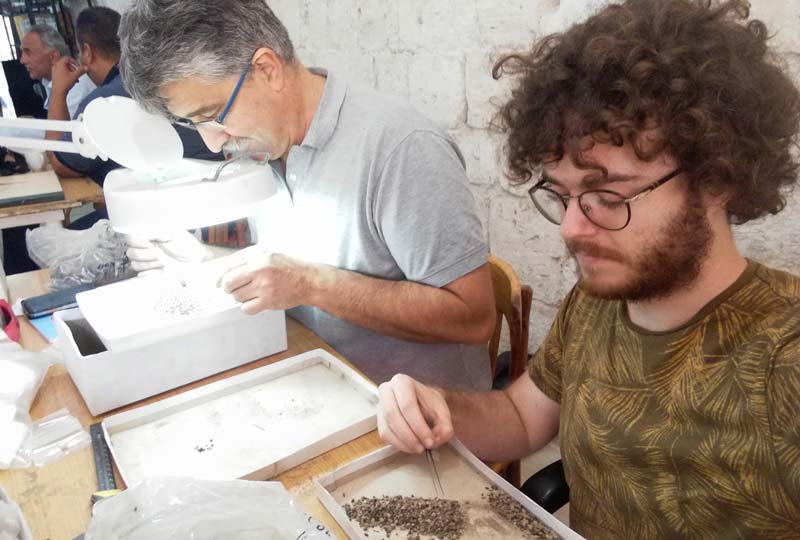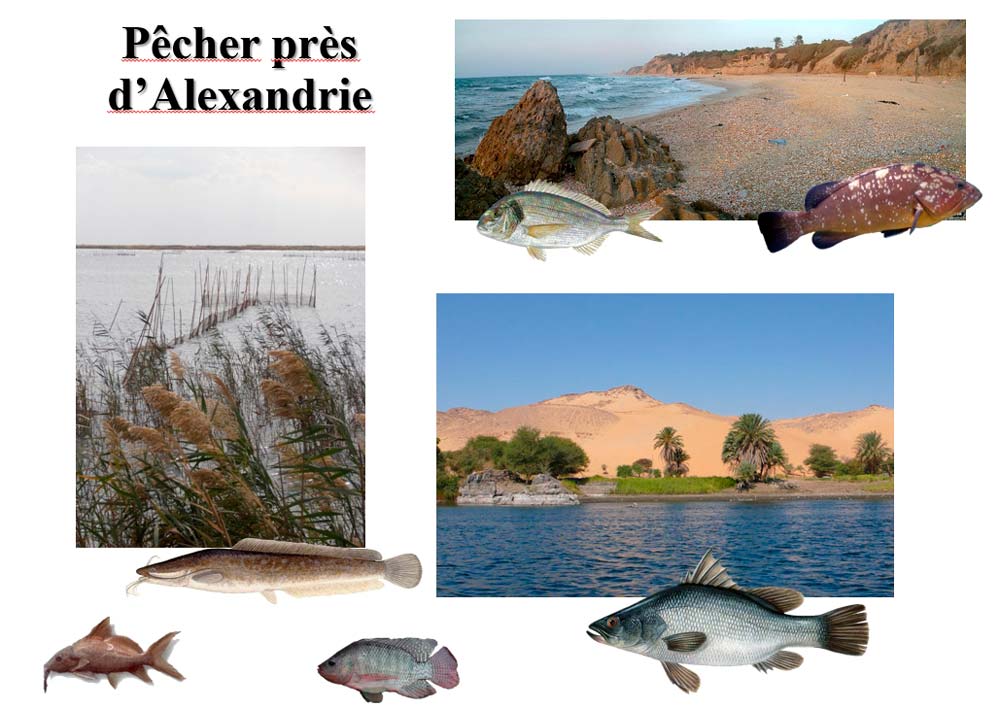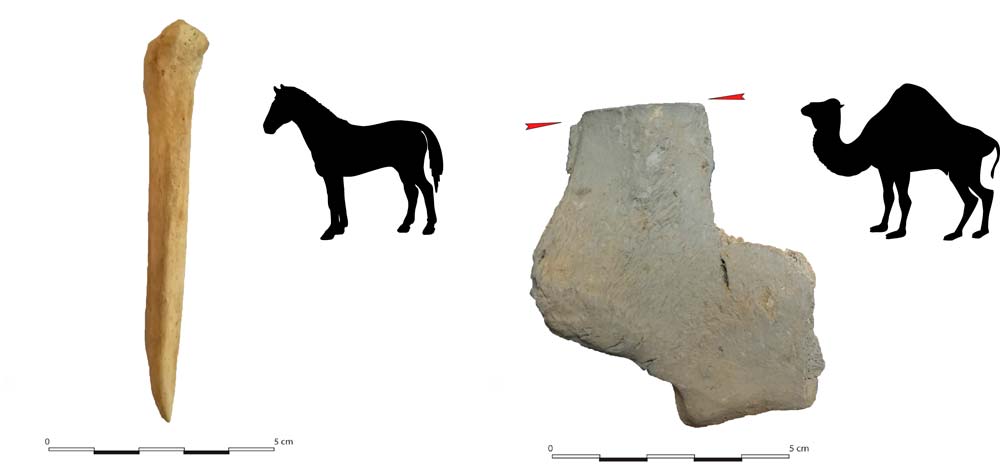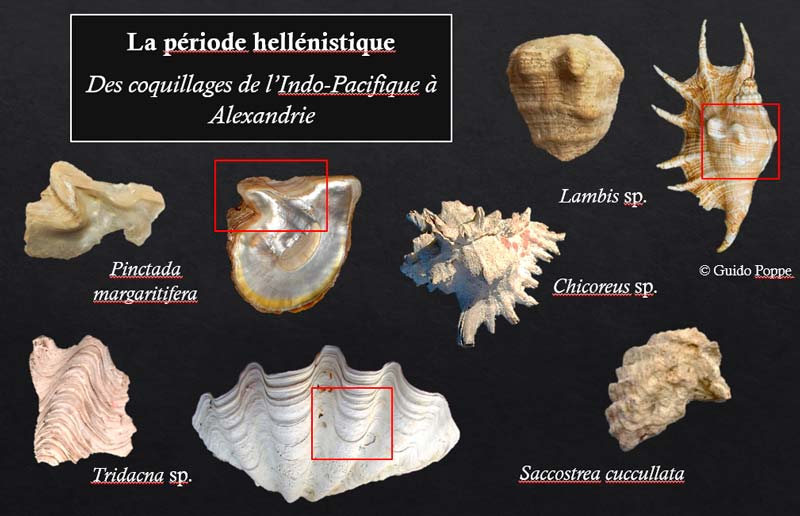Archaeozoology
Team Leader : Nicolas Morand
A brief overview of archaeozoological studies in Alexandria
Archaeozoological studies in Alexandria began in 2001 on the initiative of the CEAlex, and have intensified over the last ten years. The systematic collection of animal remains during the archaeological excavations carried out between 1993 and 2009 led to the creation of one of the largest faunal assemblages in Lower Egypt. François Poplin was the first archaeozoologist to take an interest in this material, working on the use of hard materials of animal origin (bone and ivory) to make objects. Christine Mouchène, as part of her post-graduate diploma, was the first to study food remains from residential and funerary sites dating from the Late Hellenistic Period. These initial studies set in motion a dynamic process of research into the relationship between the Alexandrians and the animal world, which had hitherto been only partially described in textual and iconographic sources.
In the early 2010s, Sébastien Lepetz and Benoît Clavel studied Hellenistic-era sacrificial remains found on a funerary altar and in adjacent hearths in the courtyard of a tomb in the Gabbari necropolis. Their study revealed the sacrifice of pigs, roosters and fish during rituals. In 2016, a research project, as part of a doctoral thesis, was launched, focusing on a long-term analysis of faunal remains – mammals, birds, shells, reptiles and fish – discovered in ancient and medieval residential levels on seven archaeological sites located in the Brucheion district. This thesis was defended in May 2020 and will soon be published.
The faunal material was analysed in its entirety in the Shallalat archaeological storehouse in the centre of Alexandria. This study has opened up many new avenues of research into one of the largest cities in the Mediterranean region.
The issues of archaeozoological research in Alexandria
Meat as food is the primary focus of this research. Questions relating to the supply of meat to a city are central: which animals were destined for consumption? How were they transported to the city and then prepared? To answer these questions, we analyse food waste found, for example, in refuse pits. On the basis of comparative anatomy, each bone (or tooth) is observed to identify its nature and animal species. In this way, a list of taxa can be used to identify the animals consumed. Moreover, an analysis of the marks of butchering and cooking visible on the bones enables us to describe food practices. Trends emerge depending on the historical period and social milieu studied. Pork consumption, for example, was very common in the Hellenistic and Roman Periods, whereas it was rare in the Middle Ages due to Muslim dietary restrictions. The choice of meaty cuts (shoulder and haunch) or meat-poor cuts (vertebrae, extremities of limbs) also vary according to culture and social level. The result is a study of the breeding strategies put in place to meet the demand of an urban centre like Alexandria.
The Alexandrians did not only consume farmed animals. Hunting and fishing were also important subsistence strategies. Alexandria’s environment is rich in biodiversity, where hippopotamuses, ostriches, fish and molluscs were caught and fished for consumption. Archaeozoological analysis allows us to measure the importance of these natural resources in the diet of the inhabitants. As a result, the impact of mankind on the environment is also being examined.
The people of antiquity also saw animals as a source of raw materials, elephant ivory being the most famous. But so were the bones of domestic mammals, such cattle, dromedaries and equines (horses and donkeys). Craftsmen used specific bones depending on their needs. The large tubular bones of equines were used to make furniture hinges. Cattle bones, which were very thick, were used to make a variety of decorative elements, including pins and jewellery. Mollusc shells were also exploited for the raw material they could provide: mother-of-pearl. The mother-of-pearl from certain marine and freshwater shells was used to make inlay elements. Large bivalves such as the Indo-Pacific pearl oyster were sometimes used as containers, while small specimens from the Mediterranean Sea – clam, oyster, murex – were used in wall decorations in homes of the Hellenistic Period.
The Alexandrians found multiple uses for animal resources. Faunal remains bear witness to this, and their analysis sometimes reveals unsuspected uses. Some practices are similar to those observed in cities of the Greek world, while others are close to those of Pharaonic Egypt, and some are unheard of in the ancient world. Archaeozoological research will be continued as part of a post-doctoral programme supported by the Fyssen Foundation. It offers an opportunity to deepen our knowledge of local history, cultural relations and the organisation of trade networks in the past. And, it will enable us to write another chapter in the history of Alexandria.
Further reading:
S. Lepetz, B. Clavel, « A Hellenistic funerary altar and sacrificial remains in the Necropolis of Alexandria », in M.-D. Nenna, S. Huber, W. Van Andringa (éd.), Constituer la tombe, honorer les défunts en Méditerranée antique, Alexandrie, 2018, p. 117 138.
N. Morand, « The exploitation of molluscs and other invertebrates in Alexandria (Egypt) from the Hellenistic period to Late Antiquity: food, usage, and trade », Anthropozoologica 55 (1), 2020, p. 1-20.
N. Morand (à paraître), Les animaux et l’histoire d’Alexandrie antique et médiévale. Étude archéozoologique d’après les fouilles du Centre d’études alexandrines (1993-2009), Études Alexandrines, 2020.





